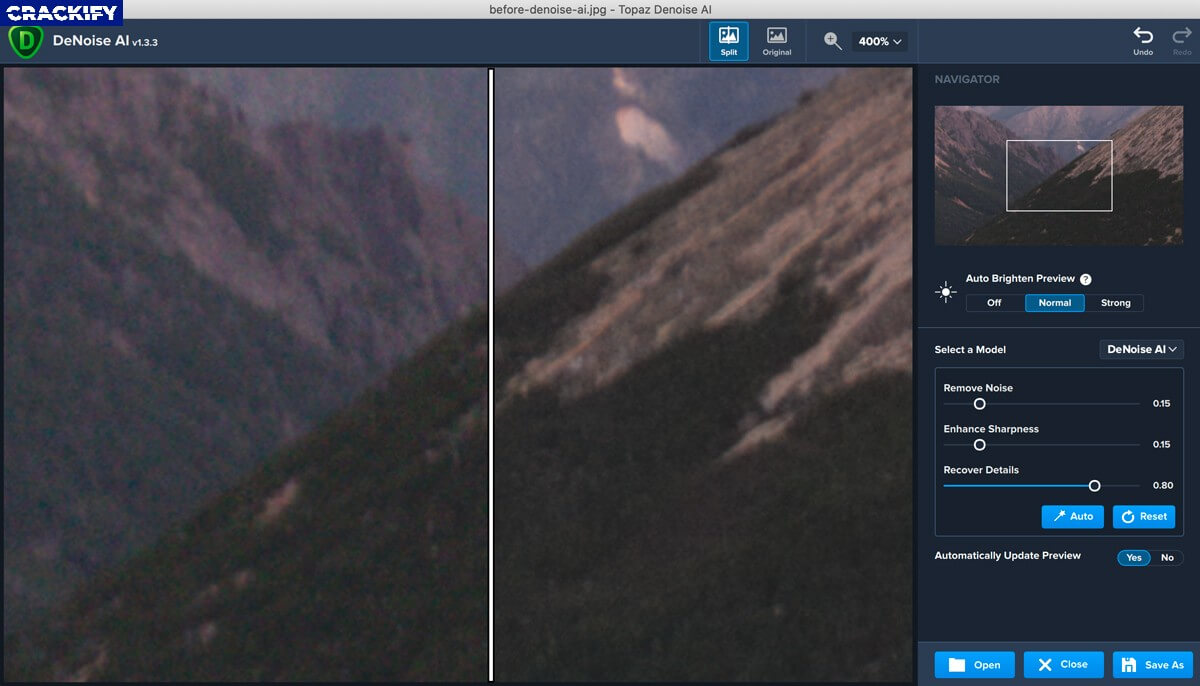

This is a process of learning and experimentation with your chosen software. Once the preset is in place, I start tweaking sliders to get the look I want. I like a more natural look to my HDR images, rather than overdone or excessively haloed.
#Topaz denoise hdr pro#
With Photomatix, as with HDR Efex Pro and the others, I can create presets that are roughly set up according to my general preference. I pull those files into Photomatix and start the tone-mapping process. I then save JPEGs for normal day-to-day work or TIFFs for exceptional landscapes from each RAW, usually just naming them 1 through 5. I typically boost the clarity, contrast and sharpness (masked), and reduce noise, and I sometimes also alter the color and white balance at this point. When I have my five RAW files, taken via bracketed exposure (usually +/-3 EV-standard exposure, -2, -1, +1, +2 EV), I run each RAW file through Adobe Lightroom, using a preset so each exposure receives identical treatment. This allows me greater latitude and control of adjustments in post, and when shooting bracketed shots for HDR, if there was too much movement in the frame, I can use a single RAW shot to create a pseudo-HDR by saving multiple files from the same RAW, each with different exposure values (see the sidebar “Creating A B&W HDR From A Single RAW File”).
#Topaz denoise hdr software#
The same basic workflow steps apply regardless of which HDR software package you’re using, however, be it Oloneo PhotoEngine, Nik Software HDR Efex Pro, Unified Color HDR Expose, Photoshop’s Merge To HDR Pro or any of the many others.įirst, I always shoot RAW. I encourage you to experiment and discover which method works best for you, artistically, creatively and economically.įor this article, I’m using HDRsoft’s Photomatix for my HDR rendering. I’ll show you how I do it the way I do it and also address a few alternative methods. Many photographers wonder about the “right” way to make a black-and-white HDR, given that there are numerous possible paths you can take through the editing process to achieve the end result.

#Topaz denoise hdr full#
Figure 2 is the full HDR conversion using the steps I’ll outline in this article. Figure 1 is a single-exposure photograph that I converted into black-and-white-actually, the “middle,” or 0 EV exposure, in a bracketed series I was taking for HDR conversion. All of these elements lend themselves immediately and powerfully to black-and-white photographs, making HDR another viable tool in the monochrome photographer’s arsenal.Īs an example, look at the following images. High Dynamic Range (HDR) photography can be an extremely useful technique for bringing out microtexture, enhancing the effect of light and shadow, and creatively influencing the overall tone of an image. The key, just like in a traditional darkroom, is moderation, which you can see in Joseph Eckert’s examples on these pages. Like a master film and paper printer working with graded papers and elaborate dodging and burning recipes, HDR lets you pull maximum shadow and highlight detail from tricky images. HDR technology is ideally suited to black-and-white photography.


 0 kommentar(er)
0 kommentar(er)
